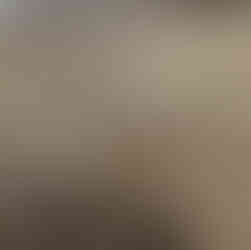Pruning your trees is not as difficult as you might think, and yet the benefits of doing so can pay off big. Our main focus here at Turkey Creek Trees is producing fruit trees for both wildlife food and human consumption. While it is true that trees have grown for eons without human intervention, and they will continue to do so, trees benefit from a little hands-on work. Making sure a tree has a sound structural framework means it can handle heavier crop loads and stand up to harsher weather conditions (namely wind). One of the most recognizable and easiest problems to fix is a double leader in young trees.
Young Tree with a Double Leader Mature Tree with a Double Leader
Double leaders are notorious for eventually splitting in the narrow crotch angle created between the double leaders. Double leaders eventually grow to the point where both leaders are pressing into each other with bark trapped between them. This bark trapped layer can result in water being trapped between the leaders causing rot. When the leaders/ trunks eventually split apart the damage is going to be severe to the remaining trunk, very likely never healing properly and allowing rot to begin in the heart wood of the tree all the way to outer cambium layers. Pruning off one side of a double leader when the tree is young not only prevents the likely hood of severe damage to the tree at some point it also focuses the trees energy into one leader leading to larger trunk diameter and quicker overall upward growth. Pruning cuts should be made with sharp, "clean" tools.
Pruning cuts should always leave the "collar" at the base of branch on the tree. Cutting too close to the trunk will severely hamper the tree's ability to quickly callus over the cut stub of the branch. Leading to dead tissue that will either begin to rot or it can allow insects easier entry into the interior of the tree. The branch collar is the raised circular ring of growth between the limb/branch of the tree and the trunk.

Double leaders are the generally the worst-case scenario for narrow crotch angle. However, narrow angles between any limb and the trunk are also highly susceptible to the branch splitting or tearing away from the main trunk. This is especially true in soft mast (apples, pears, etcc) producing trees where there is a significant amount of weight placed on a tree branch with a full crop load. Some tree species are more prone to having limb structure with this issue, Maples are a prime example. Other varieties naturally have good branch structure. With tree varieties prone to narrow branch angles spacers can be used on young trees or branches weighted down to promote better branch angles. Dead, diseased and damaged wood should also be pruned from a tree anytime it is present. Generally, just prior to Spring bud break is the best time to prune trees that way the tree doesn't expend energy on opening leaves and flower buds that you are going to remove through pruning. Also disease and insect pressure is less in the cooler months. The open cut can serve as an entry point to disease and insects during warmer temperatures.








Hey, Chris- Great blog post, as always. Some additional questions for you. What constitutes a "clean" tool for pruning? I've used bleach diluted in water at about 10% strength to dip my pruning shears in between cuts on different trees. Is this all right to do? Also, when pruning, I usually go by the following guidelines: trim any dead branches, trim any branches that are rubbing on one another, trim any branches that grow straight up or straight down (water sprouts), and trim any suckers. Are there any other growth issues I should look to remove? (I know attending one of your pruning demonstrations would be the ideal choice, but I'm currently living in MN, so cannot make it in person).…